Digital Transformation: Customer Centricity & Intimacy
Digital Transformation: Customer Centricity & Intimacy
It was inspiring listening to IMD Professor Goutam Challagalla on Customer Centricity. He introduced a three level customer intimacy framework, an instant realization for most of the industry that everything the industry is driving in digital transformation like one click, instant issuance, instant approval, self-servicing from digital channels like mobile and internet in the name of improving customer experience are Level-1 customer intimacy and not the top of the tier experience. The introduction to the the efforts of brands like Zapposand what they have done with customer intimacy and USAA’s customer journey aligned organization and integrated offering, a Level-2 customer intimacy, helped to understand what was missing in level-1 customer Intimacy initiatives. It was a reminder to go beyond operational efficiency focused digitization to achieve deeper customer intimacy. The Level-3experience that was discussed is something most of the organization have been talking about as part of the big data and analytics initiatives but only very few like Ant Financial or ZhongAn or Amazon have mastered it. It is the top tier in customer intimacy where the organization is able to uncover unarticulated or hard to express needs of customer through data and serve them. Referring to MIT Sloan’s High Price of Customer Satisfactionresearch article by >Timothy Keiningham, Sunil Gupta, Lerzan Aksoy and Alexander Buoyeand three competitive strategies, or value disciplines: Operational Excellence, Product Leadership and Customer intimacy introduced in The Discipline of Market Leaders book by Michael Treacy and Fred Wiersma,Challagalla delivered the following striking learning points:- Customer satisfaction that every organization cares about has a very weak relationship to customer spending. Return on investment in increasing customer satisfaction is trivial and often negative
- What matters is how customer rank your brand in terms of satisfaction as compared to your nearest competition. An 8 out of 10 NPS to your brand and a 9 out of 10 NPS to the competition brand or 9 out of 10 NPS to both brands only means likely higher spend with your competition or equal split spend between two brands
- Right Product, level of competition and lock-in or how easy to switch determines loyalty in most part
- Preventing customer base erosion dominates in decision making and results in irrational retention at any cost situation and lose focus of acquiring right customer base
- Choosing between better Operational Excellence model and asset utilization (e.g. Ryan Air, Vanguard) versus Product Leadership through Innovation (e.g. Apple) versus Customer Intimacy (Level-1, 2 & 3) and not getting stuck in the middle and trying to balance all three is critical to brand success and ROI
- Customer feedback needs to be seen via the right lens as it will always prompt you to act like the best brand in that category. If budget airlines starts acting like full service airline due to customer feedback, it will result in big trade-off to the business model. It is important to group the feedback into trade-off and non-trade off or what you promise as business model or product or benefit to customer
- Know your segment of customer, deliver a highly meaningful benefit (value or product or service) to the target segment better than the next best alternative in the marketplace
- If operating in higher level of Intimacy, the brand should be ready to recommend competitor’s product best suited for the customer
To get a better perspective of this intimacy framework, it becomes critical to learn what Zappos and USAA has managed to achieve in the customer intimacy journey.
Zappos Customer Intimacy Journey
Zappos is a $2 billion Las Vegas-based online footwear and clothing retailer. It has set its purpose as “To Live and Deliver WOW,” which is typically delivered over the phone by their contact center employees who are called, Zapposspeak the Customer Loyalty Team (CLT). Zappos commits itself to delivering wow–or at least a wow attempt–on every phone call that employees field in its contact center. Zappos 10 Core Values are their way of life. It includes
- Deliver WOW Through Service
- Embrace and Drive Change
- Create Fun and A Little Weirdness
- Be Adventurous, Creative, and Open-Minded
- Pursue Growth and Learning
- Build Open and Honest Relationships With Communication
- Build a Positive Team and Family Spirit
- Do More With Less
- Be Passionate and Determined
- Be Humble
Zappos believes that companies with a strong culture and a higher purpose perform better in the long run. When you click on the ‘About Zappos’ link in their website, instead of the usual management team, structure, executives bio you will see eleven articles on culture at Zappos or related to Zapposspeak and written by zapposspeak. In this digital age with mobile being dominant channel, they still rely on and invests in the call center not as cost, but as an opportunity to market. Their whole strategy is to create loyalty through ‘wow’ moments and emotional connections by having conversation with customer. Instead of valuing quick resolution time or processing high call volumes, Zappos looks at the percentage of time agent spent on the phone to get the Wow as they strongly believe that helps to promote customer loyalty. There are several stories about Zappos wow moments including CLT finding a cycling shoe for a customer from another site when they were out of stock, zapposspeak sending flowers to a customer who called to return the shoes that she ordered for her husband who passed away suddenly, Zapposspeak sending gifts or birthday cards or helping customers to get their products quickly though they ordered for normal delivery. True to their values they always find a way to create a wow moment for their customers. To the extent, Zappos founder Tony Hsieh wrote a book on modern customer service titled Delivering Happiness.
Though only 5% of Zappos sales happen by phone, they have found that their customers telephone them at least once at some point, and if they handle that call well, they have an opportunity to create an emotional impact and a lasting memory. As for gifts and surprises like faster delivery and yearlong return policy, their policy has been that most of the money they might have spent on advertising should be invested in customer service, so that the customers will do the marketing for Zappos through word of mouth. Policies like stay connected as long as you need, 365 days return, two way free delivery and call center based service model operated from Las Vegas with agents who are well versed with American culture and local knowledge are all part of their commitment to customer centricity and intimacy. If they were trying to balance between operational excellence and customer intimacy, they would have kept the return policy to 30 days, moved the call center to low cost country and gone for maximum call closure in shortest resolution time or mobile based resolution and tweaked the policy around two way free delivery for returns, which is costing them more than 1/3rd of their operational cost. Their theory is that you have the customer’s undivided attention for five or ten minutes when they are on the phone, and if you get that interaction right, the customer remembers the experience for a very long time and will tell everyone about it. They also view the ROI as something that can grow over a period of time if they create positive emotional associations with their brand. To make that happen they have focused most of their customer service effort after the sale is made.
Zappos appeals to customers who enjoy a touch more backstory on the merchandise and have a bit more interest in the people who are selling it to them. This differentiation isn’t achieved through the website and it’s a result of how people are treated when they actually interact with Zappos. The differentiation between Zappos and others lies in how they build personal connection, primarily on the phone. Zappos will do anything to make sure it’s an engaging and personable experience for the customer, Zappos loves to show appreciation to their customers. While assisting the customer on the phone, it’s not uncommon for them to send a baby blanket to a customer who has a screaming infant in the background, or even a wine set for that stressed out mommy or send a Slip ‘N Slide to a family with four little girls who needed something fun to do over summer. That’s customer intimacy at higher level and all by just connecting with the customer over phone on a conversation for 10 minutes or any amount of time (10 hours 43 minutes is the current record) it takes to build that memorable moment.
USAA Customer Intimacy Journey
When it comes to driving growth through customer loyalty, United Services Automobile Association (USAA) is in a class by itself. USAA is a $30 billion revenue company with 12.4 million customers offering banking, investing, and insurance to people and families who serve, or served, in the United States military. USAA’s mission and commitment is to provide excellent service for its members – who are military members and their families. USAA’s Net Promoter Score (NPS) has been the best in the financial industry eight years straight. It beats all its competitors in a number of key loyalty categories. For instance, a survey by Raddon shows that USAA members are the most likely to obtain an additional financial product, as their repurchase intention is at 83% as compared to their competitors who are anywhere between 15-30% lower. USAA’s strongest factors that contribute to its customer loyalty includes:
- Innovative products and services - products and services that customers want and need
- Latest technology for account access - accounts are easy to open
- Easy to do business with; fast and efficient service
- Fair service charges
Like Zappos, USAA’s mission statement around customer centric defines its commitment to the way the organization is structured and how the technology is being applied. For example, USAA recently rolled out a mobile based augmented reality app for buying car named Augmented Reality Car Shopping Experience. The thought process behind this shopping experience project will help to demonstrate the USAA’s commitment to customer centricity. With this app, customers can point their phone at any vehicle and get an augmented reality overlay that provides all its critical info including the make, model and year of the car, as well as its price range and quotes for insurance and a loan to purchase it. It also shows similar vehicles for sale in the area, and alternatives to be considered based on customer income, all overlaid on the image of the car. The app is designed to save customers time and embed USAA into the car-buying process. It brings USAA’s two separate business units Auto Insurance and Banking together as one single entity through the app to the customer. It also provides the customer a view on total cost of ownership in real-time wherever they are.
Studies suggest that it costs companies six to ten times to acquire a new customer as compared to retaining the existing one and cross-selling additional services. USAA does that very well with its customer centric approach. USAA’s integrated solutions offering based on life events of customer was established by realigning the company and integrating products into seamless life events based solutions. Life events or major decisions referred here include getting married, buying a house, having a baby or leaving the military, death of a spouse, divorce and military deployment, disaster and recovery like hurricanes, buying a car etc. Meeting these needs involves several products from multiple lines of business (banking, insurance, investments etc.). USAA started doing that integration in 2010 for buying a car and continues to integrate different products and services to make financial decisions triggered by a life event easier and seamless for customers. Similar to Zappos CLT team, USAA created a new Member Experience (MX) unit responsible for delivering seamless integrated experience to members across products and channels by centralizing call centers, channel management, marketing and sales.
This customer centric life time event based approach has resulted in one third of the members having an auto loan, one third having a mortgage with USAA in addition to other financial products like credit cards, checking accounts and savings accounts. This desire to genuinely add valued services that increase customers’ trust in the organization is fueling the innovation culture at USAA. The desire to give as much help as possible to customers is one that sums up USAA, and it is also a key factor in driving customer experience. Apart from the above, USAA distributes its profits back to its members. Every employee here is a customer and a member of USAA. This, combined with serving members every day, keeps employees in constant touch with how USAA does business and what needs to improve and drive that improvement as each one of them is part of the business. The 10,000+ ideas submitted by employees each year (897 received US patents) and the 25 fully realized patent authored by a security guard in USAA during his tenure is a testimony of innovation and customer experience driven culture.
Competitive Strategy: Customer Intimacy as Value Discipline
>Both Zappos and USAA customer intimacy journey reminds us the three competitive strategies, or value disciplines defined by Michael Treacy and Fred Wiersma in The Discipline of Market Leaders and the difficulty of balancing in all three quadrants. In developing deeper customer intimacy, Zappos chose to look at the additional operational expense as marketing expense. In the case of USAA, the deeper customer intimacy was built based on multi-pronged approach including additional spend on innovation, leveraging technology, realigning the organization by customer journey, integrating the products and a culture of going extra mile for customers. Those actions results in additional operational expense but it helped USAA to set the worldwide benchmark for NPS and Customer intimacy. Yet, the two examples only qualifies as Level-2 intimacy. Amazon ranks highest in every industry survey for the Level-3 customer intimacy in the industry and it does that by using technology. It builds stronger bonds by being reliable in terms of cost and delivering by mastering logistics and supply chain. It exceeds customer expectations by innovating and continuously expanding its offers like Prime. Its flawless execution and suggestions of products based on customer preference and purchasing pattern creates an addiction. If we apply the three competitive strategy to Amazon, they excel in customer intimacy as a total solution provider.
Customer intimacy is built around the idea of putting the customer at the center of everything. As technology level the playing field, business differentiation will be all about knowing the customer well and offering the customer unique experience and customized offering either through use of technology or bundling of products and services or predicting what they will need and delivering them when they need it. It is going to be more and more about using the technology in a customer centric way and gaining deep customer insight. Businesses that excels in this space and align their products and services based on the deeper customer insights will develop intimate relationship and result in repeat business and better return on investment. Intimacy is about gaining their trust and for that treating fairly, charging at the right price and understanding customer perspective and acting on their interest will result in long-term economic value. At times it is the ability to respond quickly to almost any customer need, from customizing a product to ful?lling a special request and it requires appropriate degree of operational ?exibility including delivering a product or service that is not related to the core business. Therefore, it is important for the leadership team to spend time focusing on the true measures of revenue growth through customer loyalty. If the loyalty is focused on product leadership like Apple or operational excellence like Ryan Air then that is what the customer value and what customer want when they buy. By actively listening to the customer and getting a first-hand view of how they use their product and service, businesses can make right changes and generate right customer intimacy (not just customer satisfaction) and repeat business.
You May Also Like

Install These Free Security Tools Now!
Have you heard of intrusion detection systems? Also known as IDS, this software is often used to det...

Crowdfunding drives unprecedented efficiency
Crowdfunding has become the center of attention in the field of financing. It is also an increasingl...

Everything As a Service
Transition from Capex economy to Opex Economy World is in a transition from Macro to Micro. Granula...

IoT in Malaysia – 2019 Predictions
The year 2014 is when Malaysians started to Google the term “IoT” and ever since, the hy...

The business case for 5G
As of 2018 ,33 MNOs have been involved in 5G trials within Asia Pacific, accounting for 44% of 77 tr...

A New Face On Digital Transformation: Engagement Innovation
Whether we believe it or not we are in the fourth industrial revolution – The Digital Revoluti...

Technology & Competitive Data Analysis More Money – More Competition; everyone wins
Technology & Competition – More Money, Better Deal for Consumers & Companies – H...

Anatomy of Fintechs that’s redefining Financial services business models.
On a weekend in 2013 during monsoon I invited my friend and his family for a dinner at my place. It ...

Blockchain Taxation
World has paid a heavy price for trust, transparency, controls and accountability. Globally there i...

Why Is CDR / CDNR So Important?
Addressing the Fundamental Deficiency in Today’s Mainstream Cyber Security Strategies From Det...

CIO Business leadership - shifting from tech to business leadership
CIOs are no longer technocrats, they are business enablers and crucial part of organisation. CIOs sh...

Ideas and Opinions | 5G as an Enabler of Smart Cities
When 5G comes to mind these days, we think of “is this REALLY it?” and “have we re...

Lessons in Machine Learning
More organizations are using machine learning for competitive reasons, but their results are mixed. ...

Digital Indoor System: Critical Infrastructure for Digital Economic Transformation
Digital Indoor System: Critical Infrastructure for Digital Economic Transformation Developme...

The Changing DNA of the CIO CIO as Business Enabler
The idea that the role of the CIO has now gone beyond technology and innovation related issues, and ...

Today's Digital Miners
Today's Digital Miners I guess by now everyone of us who have read an article or two on digital...

Digital Transformation Readiness Test for Banks
Digital Transformation Readiness Test for Banks The questions banks need to try to answer to test ...
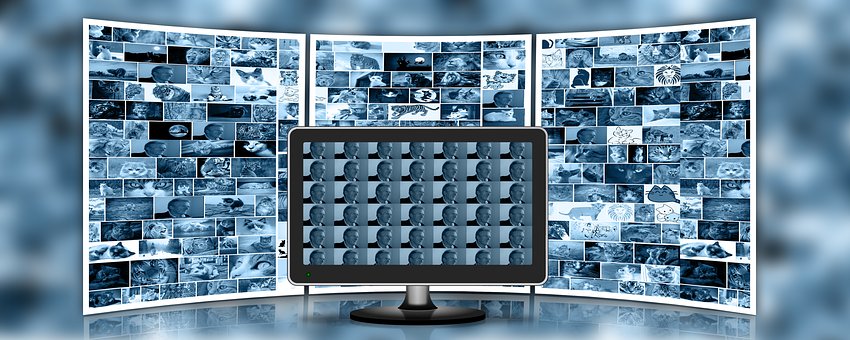
What is Machine Learning
What is Machine Learning? According to Tom Mitchell, a professor at Carnegie Mellon University has d...

Transformation of industry verticals through 5G – Focus and Look Indoors
Transformation of industry verticals through 5G – Focus and Look Indoors Now that 5G is...
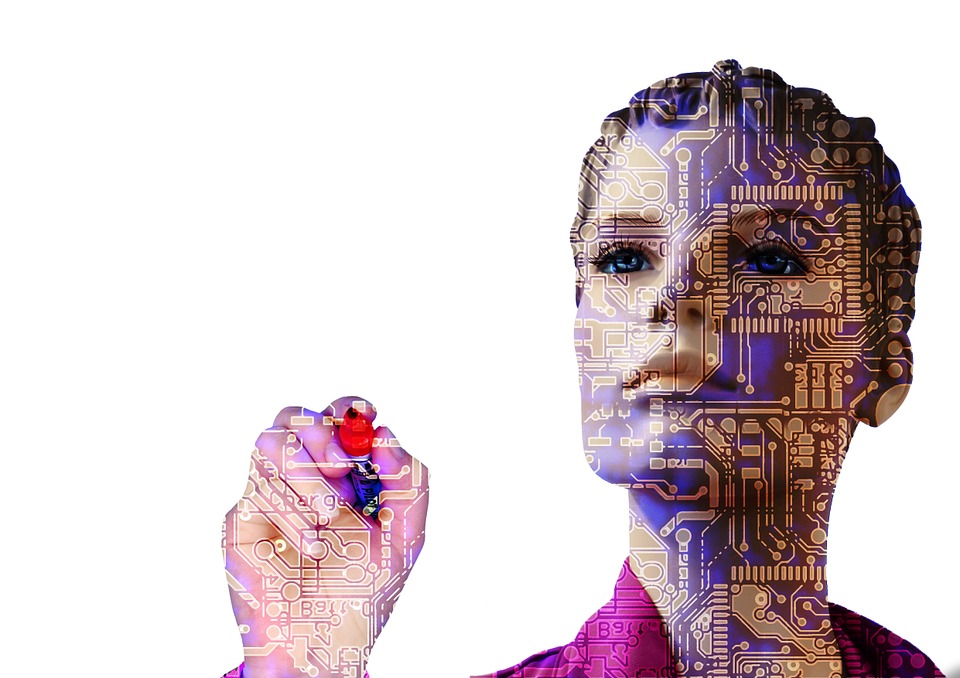
Humanize Technology - back to the basics of serving human needs, humanly
Humanize Technology - back to the basics of serving human needs, humanly The subjects of Digital Tr...
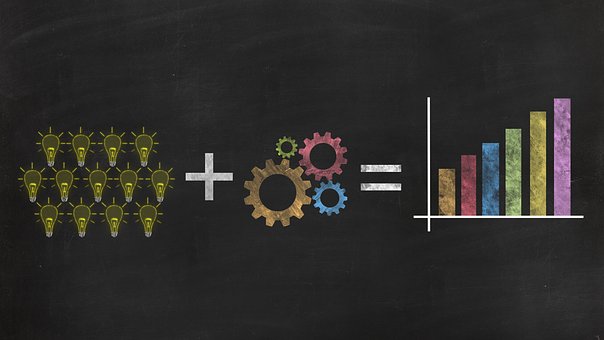
Creating the foundation for Sustainable Innovation
Creating the foundation for Sustainable Innovation In 2011, Marc Andreessen famously proclaimed tha...

About Tech Data Diversity And Inclusion
About Tech Data Diversity And Inclusion I am excited about attending the Hispanic IT Executive Coun...

Is Industry 5.0 putting humans back in the center
Industry 4.0 focused on the machines. Is Industry 5.0 putting humans back in the center? I was on a...

Importance of IT Resilience
Importance of IT Resilience Disclaimer: The posting written here is solely of my own comment and ...

Implementing a SaaS Solution – The 3 Major Technical Challenges
So when are you planning to implement a SaaS (Software as a Service) solution? Very soon, if not alr...

So you want an #Innovation Hub?
Innovation, Design Thinking, Digital, Disruption, Agile, Transformation - these are new buzz words t...

The Unsung Hero; The Data Scientist
It is quite likely you are wondering ‘what on earth’ am I on - for cooking up such a tit...

How POC projects made me a better Project Manager
How did I get here? Project Management is a tough job. We need to keep a track on budgets, timeline...

How Data and AI can help in COVID-19 crisis
Since the first report of coronavirus (COVID-19) in Wuhan, China, it has spread to at least 100 othe...

Building thriving business partnerships with Open API
Apple and Google recently collaborated to assist in enabling contact tracing and reducing the spread...

The Future of Indoors with Digital Indoor Systems
Digital Transformation, 5G, and COVID-19 have triggered further growth in indoor traffic Digital tr...

Seizing Opportunities in the ICT Sector
The Increased Pace of Digital Transformation Automation, digitalisation, artificial intelligence (A...

CoVID19, Digital, ML
CoVid19 hit us and has now created the “new Normal” in terms WFH, Video conferences, bal...

Do we really need CEOs, CFOs, and CIOs?
Why CMOs and CTOs are all you need to succeed in today's world This is my first article in a se...

Cinématographe by the Lumière Brothers & History of AI
The Lumière brothers, Auguste and Louis, French inventors and the pioneer manufacturers...

Avenues To Expedite The Incorporation Of 5G Into Industry
5G has been launched in Asia Pacific. South Korea, China, the Philippines and other countries have b...

4G/5G Fixed Wireless Access: A Critical Revenue Growth Engine
In studying key success factors of solutions, it can almost always be shown that the underlying conc...

Big Data Machine Learning IoT and PI
In the era of the Internet of Things (IoT), an enormous amount of sensing devices collect and genera...

Asia’s Plan To Leverage 5G Is Missing A Regional Strategy
The day the world’s first commercial 5G services promised a “great leap” is still ...
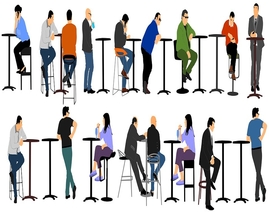
Learning from #COVID19…Would remote working be the new normal?
Musings of a Technology Evangelist In the past few months, we have all learnt many new terms&hellip...

Principles of Sustainable Cybersecurity
In past few years the annual rate of cybersecurity breaches has almost been doubled, and as a result...

Data Governance a key element for Digital Transformation
For the last few years, corporate environment, used to speak and hear lots of financial/management t...

Seven Traits of a Millennial CEO
With a staff strength and annual turnover in the order of billions and trillions respectively, Chris...
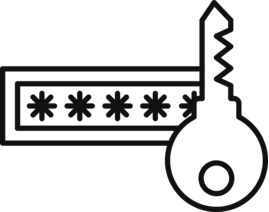
What is a Pass Key and Is Now the Time To Adopt Them?
What is a Pass Key and Is Now the Time To Adopt Them? There has been recent news about a mass...








Dhanasekhar Damodaram
GM Service Management and CIO Asia Westpac Group
Dhana is currently the General Manager, Service Management & CIO Asia at Westpac Group. He leads all aspects of Technology Service Management across the Westpac Group and technology team across Asia and responsible to deliver desired business outcomes. Prior to that, he was the CTO of Citibank APAC/EMEA responsible for strategic and operational management of the Consumer Bank Technology function. During his 7 years with Citi, Dhana held senior roles in Consumer Tech as Production Management Head for APAC, EMEA, LATAM, Mexico between 2014-16 and Technology Infrastructure as APAC Core Infrastructure Services Head between 2016-18 and Head of Consumer Services Delivery for APAC between 2012-14. Prior to Citi, he was with IBM for ~15 years as Director & Global Delivery Project Executive where he led large service delivery teams spread across Australia, Singapore, India, USA, Chile & UK.